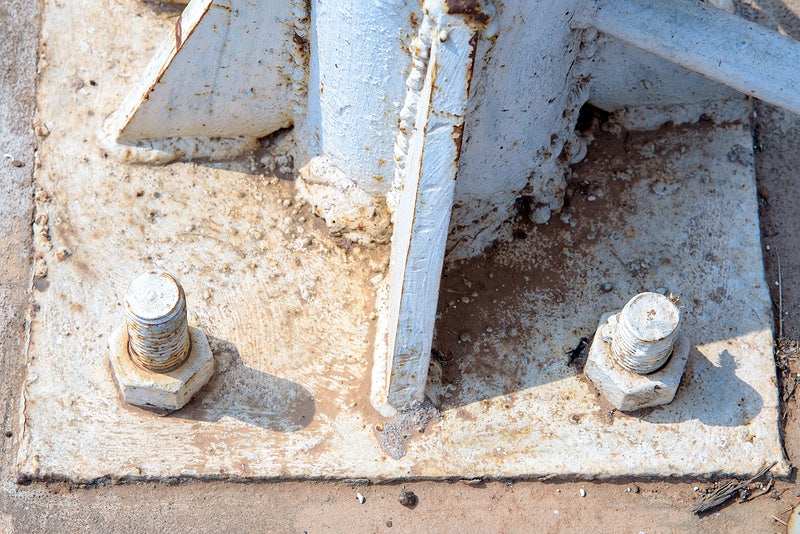
The Ultimate Guide to Base Plated Metal Fences
When you need to install a metal fence on an existing surface, the best way to do that is usually to use a baseplated fence structure. However, like most things related to fencing, there are many different options for base plated fences.
Here’s what you need to know about the more common types of baseplates, what kind of surface you need to baseplate a fence, and what kind of hardware is usually used for baseplated fences.
What Kind of Surface Can You Baseplate a Fence To?
When you install a fence by base plating it, the structure it is installed on will need to support the weight on the fence and keep it steady.
If you try to baseplate a fence to a surface that is not strong enough to support the fence, it might collapse, which could injure people or cause property damage, so you don’t want to do that!
Generally, the best surfaces to baseplate fences to are thick concrete slabs or beams, or concrete or brick walls. Asphalt, brick paving and cinder blocks or cement blocks are not usually suitable for baseplated fence installation or may require custom designed base plates.
Reinforced concrete is a good base for a baseplated fence structure, but you do need to make sure that your fence installation does not damage the rebar in the concrete. It can also be more difficult to drill into concrete that has reinforcing in it. One way around this is to scan the concrete for rebar, or you could choose a shallower fixing method, but make it stronger, such as a shorter bolt with a two-part epoxy chemical anchor.
Types of Baseplates
Once you have established that the surface you want to attach your fence to is up to the task, the next thing you need to do is choose the right kind of baseplate. There are several different types of baseplates, so let’s look at some more common options.
Square, Bottom Plated
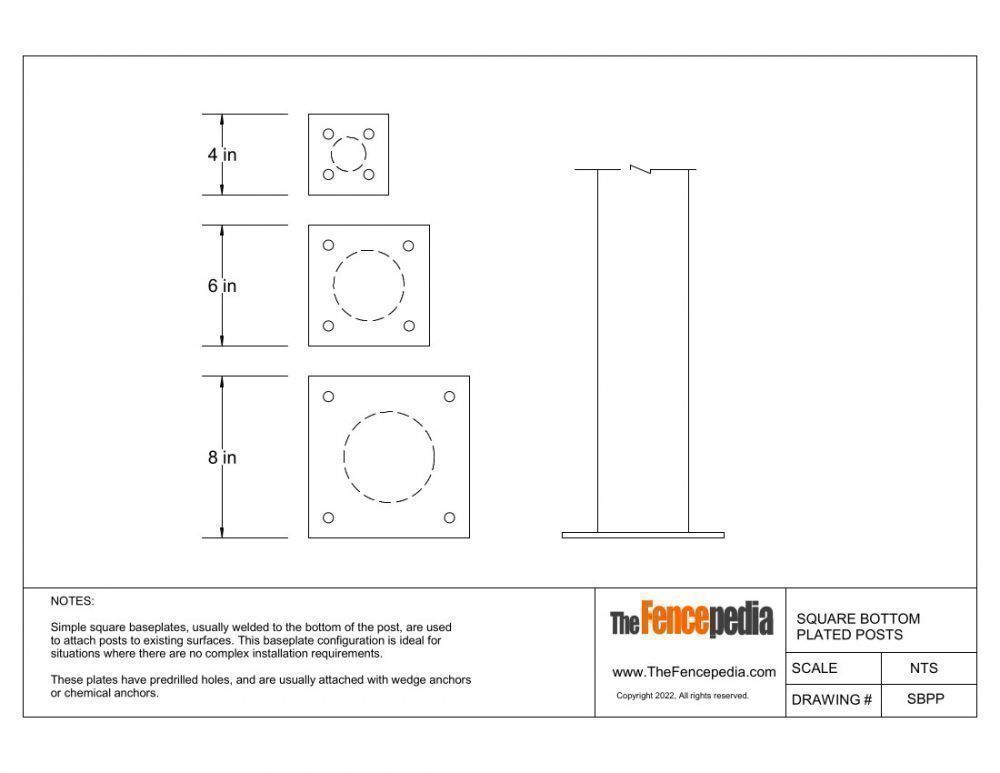
Square baseplates welded to the bottom of a fence post is the simplest type of baseplate you could choose. This will work for most simple installations, particularly when you are installing the fence on a flat slab.
Baseplate sizes are usually determined by the size of the posts.
Rectangular, Bottom Plated
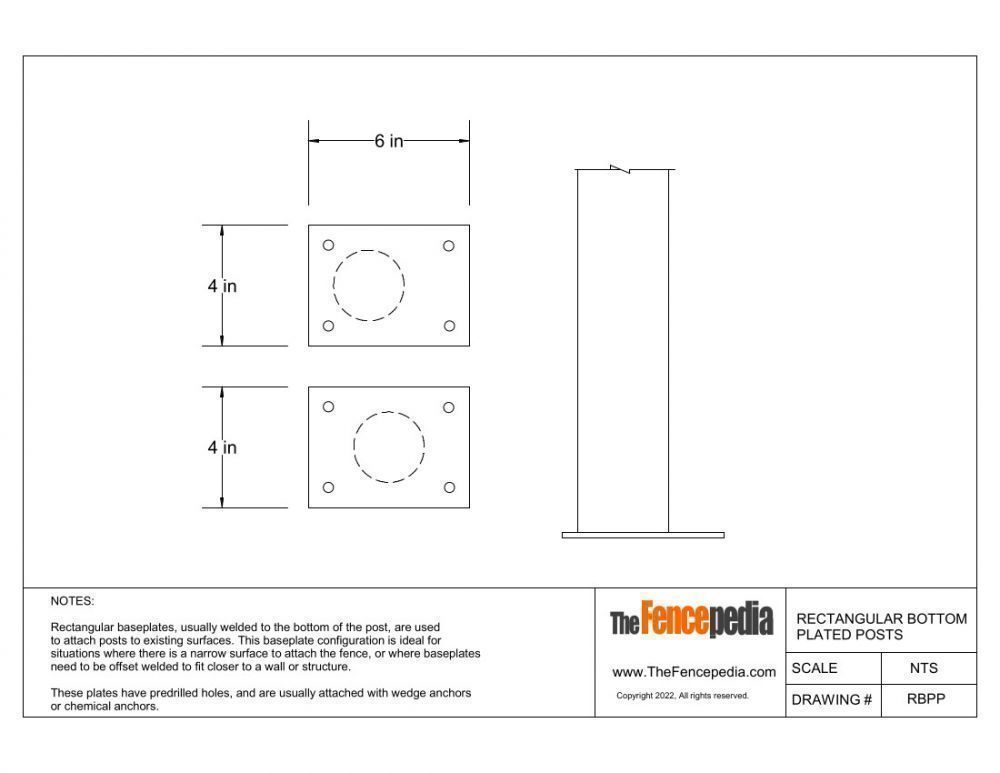
Another option for installing baseplated fences is a rectangular baseplate. These are often chosen when you are installing the fence on a narrower structure like a concrete beam.
Posts can also be offset welded, allowing them to be installed closer to a wall or structure, which is useful if you are designing a high security baseplated fence.
Side Plated
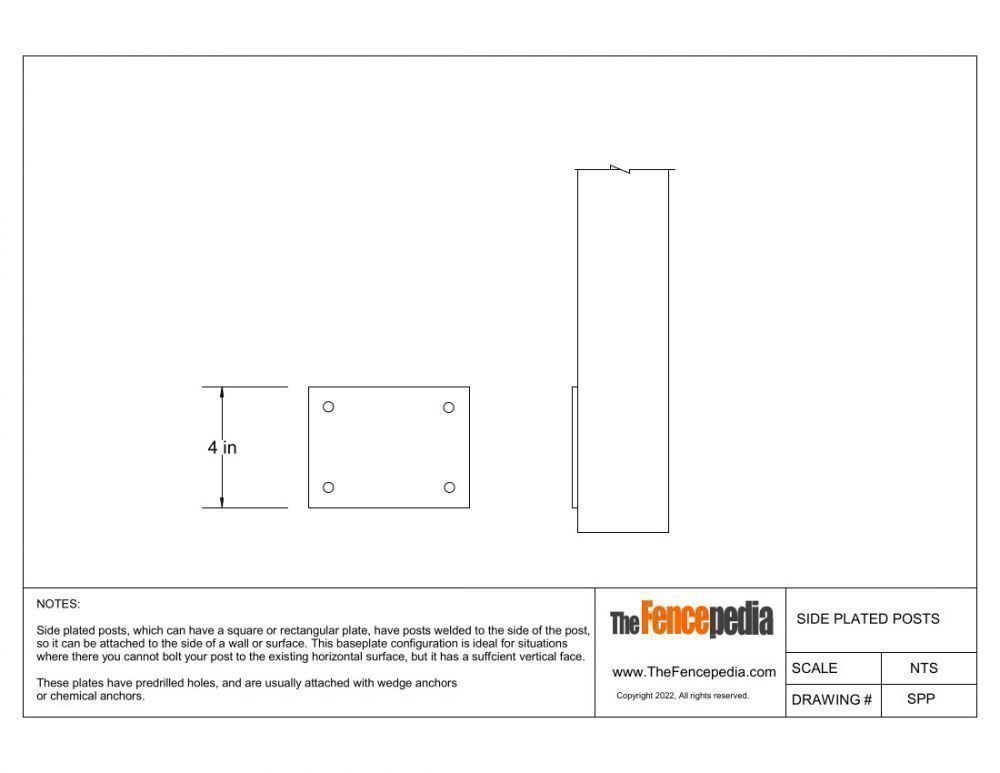
Side plated posts can be made using square or rectangular baseplates, and you can use one or more baseplates, depending on the height and weight of the fence.
These kinds of baseplated posts are designed to be attached to the side of a concrete wall or structure, which is useful when the space on top of the structure is limited.
Angle Plated
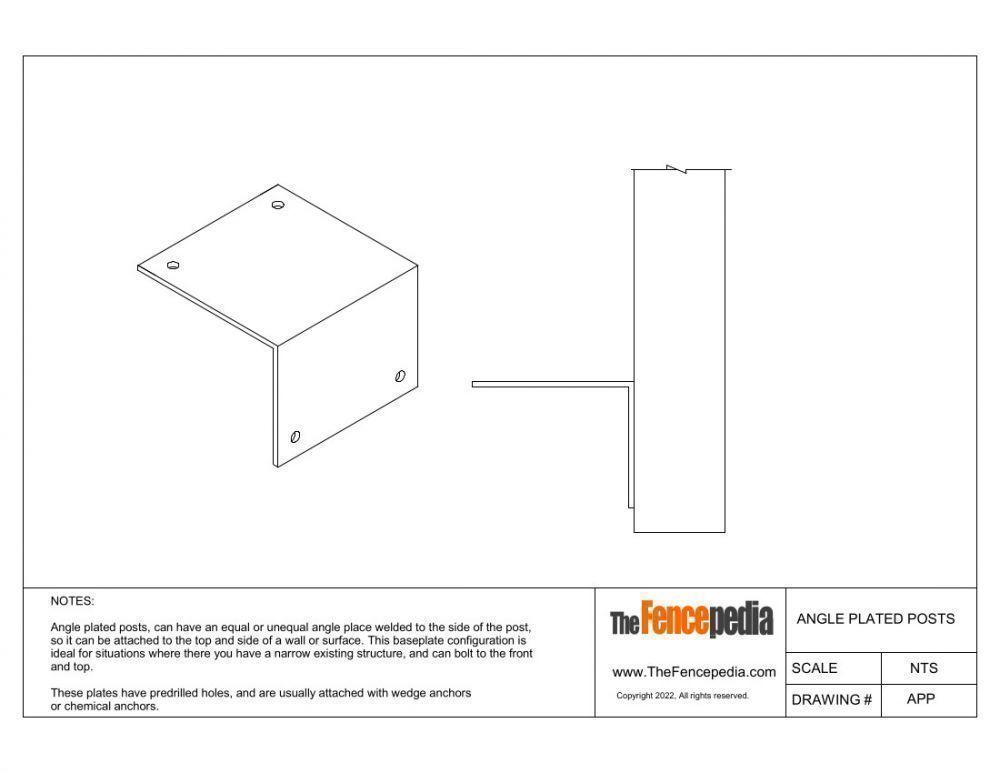
If you are installing a heavier fence, but you don’t have room for more than one side base plate, you could opt for an angle plate.
This kind of baseplate can be made from equal or unequal angle (depending on the fence design) and are bolted to the top and side of a structure.
Loose or Welded Baseplates?
Usually, baseplated posts have the baseplates pre welded before they are taken to site. However, sometimes, fence companies also use separate baseplates which have a section of pipe that is a little smaller than the inside diameter of the fence post.
These plates are bolted in place, and then the post is slipped over the “stub” and either bolted, welded, or screwed into place.
Support Gussets
Sometimes, when you are installing a heavier fence, it might be an idea to include welded gusset plates (like the photo on this article) to your posts before you install them. This can add extra strength and rigidity to your fence structure.
Top Plates
Sometimes, when fences are being installed in an area where there is a concrete floor and a concrete roof, the fence design might include top plates.
These could be loose and sleeve over or into the post, or they could be pre-welded to fit the structure. Top plates help to add rigidity and security to baseplated fences in certain situations.
Attaching Baseplates
There are several ways that baseplated fence posts could be attached to a surface. These include:
- Pins, plates, or bolts cast into the surface during construction – the baseplates are then dropped over the pins, and fastened in place
- Wedge anchors, which are the most common method of attaching base plated fence – they are cost-effective, strong, and readily available
- Chemical anchors – usually two-part epoxy used with a galvanized or stainless-steel bolt or threaded rod with a suitable nut
Design for the Site
With so many options available for baseplated fences, it’s fair to say that the best way to get the right fence for your site is to design it on a per-project basis.
Good fence contractors and installers will be able to advise you, and you can download some simple drawings of the various baseplate options from this page.
Download Baseplate Drawings
-
Side Plated Post
DownloadDownload this file FREE!
Take me to my files! ×To make sure you're a human and not a bot, please enter your email address below.
-
Angle Plated Post
DownloadDownload this file FREE!
Take me to my files! ×To make sure you're a human and not a bot, please enter your email address below.
-
Rectangular Bottom Plated Posts
DownloadDownload this file FREE!
Take me to my files! ×To make sure you're a human and not a bot, please enter your email address below.
-
Square Bottom Plated Posts
DownloadDownload this file FREE!
Take me to my files! ×To make sure you're a human and not a bot, please enter your email address below.

